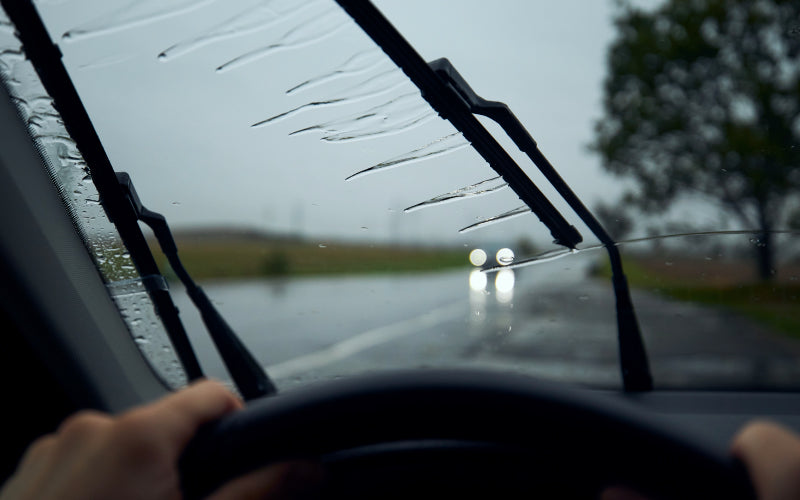Did Your Wiper Blades Survive the Winter Storms?
It’s less than a month to go until the first official day of spring on March 20th....

We’re looking back at the winter storm season and our top tips to prepare your vehicle for any future ones.
UK storms so far
In the last six months alone, the UK has been battered by 10 different storms. Rain and strong winds have become a regular occurrence, disrupting road users and public transport.
- Agnes: 27th – 28th September 2023
- Babet: 18th – 21st October 2023
- Ciaran: 1st – 2nd November 2023
- Debi: 13th November 2023
- Elin: 9th December 2023
- Fergus: 10th December 2023
- Gerrit: 27th – 28th December 2023
- Henk: 2nd January 2024
- Isha: 21st – 22nd January 2024
- Jocelyn: 23rd – 24th January 2024
How to prepare your vehicle for a storm
There are a few ways you can prepare your vehicle before driving in a storm.
Check your wipers and screen wash
It’s important to regularly check your wiper blades and screen wash, but even more vital when a storm is imminent. You’ll be relying on both heavily to give you a clear view of the road and stay safe.
Make sure your phone battery is charged
In case of an emergency, or you get stranded, it’s crucial that your phone has battery life to call for help. We would recommend also carrying a portable charger in case your phone suddenly goes flat on the road.
Drive around puddles
If you notice any upcoming large puddles, try to drive around them if possible. When you drive directly through puddles, you can put your car at risk of serious damage. If there’s no way to drive around it, be sure to tackle it carefully and slowly.
Wait out the storm
Driving can become more dangerous as storms worsen. If you do set off and conditions deteriorate, stop at a safe, covered location and wait it out. Always make sure not to park under any trees as they could blow over in the wind.
Should lightning strike, stay in your car with the windows up until it passes.
How to drive in a storm
While you might have had plenty of practice driving in storms recently, we’ve rounded up our top tips on how to drive in a storm.
If in doubt, always wait until the storm has passed if your journey is not essential.
Slow down
Rain can restrict your visibility, even if it’s only moderate. Always take extra care when driving in the rain and reduce your speed.
Stick to main roads
Country roads can be more at risk of flooding, fallen debris, and tree branches. If you can, stick to the main roads where there is less chance of obstructions.
Use dipped headlights
As soon as visibility reduces on the road, it’s important to use dipped headlights to give you a clear view of the road.
Grip your steering wheel with both hands
We all know what it’s like on a particularly windy day when a strong gust can unsettle your car. Be sure to always keep a firm grip on your steering wheel, especially if you are planning to overtake.
Increase your distance between other road users
It’s important to leave extra room between you and any vehicles, even more so when the roads become slippery. This will give you more time to react to any potential hazards. It’s recommended to leave at least a four-second gap from the vehicle in front of you.
Always stay one step ahead
Lorries and other large vehicles can spray your car and reduce visibility. Make sure to be extra alert during stormy weather to anticipate the actions of other road users.



